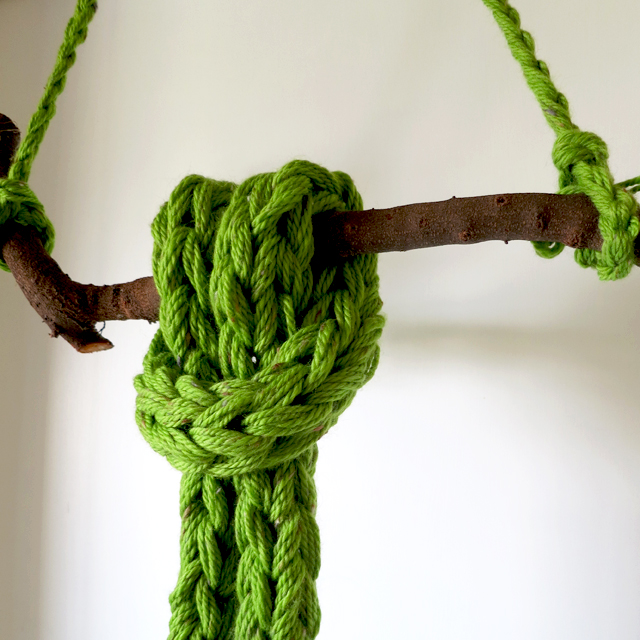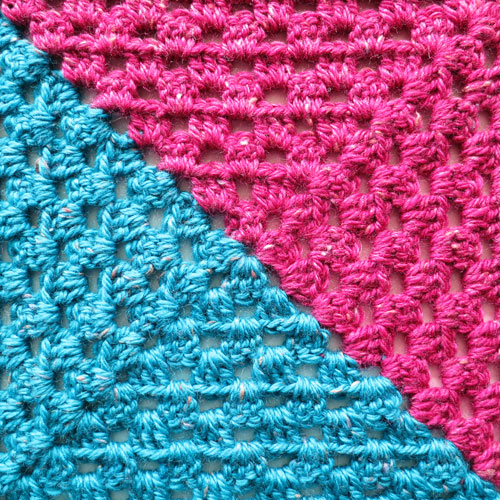Learn to knit Latin American style
I have just finished production of a new video that demonstrates the method of knitting my Chilean born mother taught me – known as the continental combined method. I taught classes in this method when we had our Melbourne yarn shop open.
There has been an ongoing debate about whether the continental or english method is the fastest way to knit. I recall one customer coming into the shop a few years back determined to demonstrate that the English method was faster than continental. There was no denying that she was a fast knitter. However, when it comes to rib and seed stitch, I think continental wins hands down.
Apart from speed, there are also ergonomic considerations when it comes to which method to use. Some people have found that using both methods eases the strain on your hands as they use different muscle groups.
Give Latin American style knitting a go and let me know your verdict.
Jumbo sized i-cord
I had some fun over the weekend making this super-sized i-cord using a new technique I came up with last week. It involves a mix of finger knitting and finger crochet.
It can be used with up to about 6 stitches, depending on the yarn used. It is also a fun way to teach children how to knit. Here is the video demonstrating the technique.
The green rope used 8 strands of the Marta’s Yarns Retro (Bulky weight) wool blend yarn and I used the Marta’s Yarns hand-painted Slubby in the video demonstration.
Enjoy.
Pat
Dissecting the granny square
I have finally finished production of my Granny triangles video and it is loaded up to YouTube.
It is a new take on the traditional granny which I hope will inspire many new projects.
Pat
Granny Triangles launch this week
I have been working on this idea for a few months now and had done a few samples in New Zealand. Splitting up a granny square into two triangles is easier than you think.
I am now experimenting with the same technique splitting into into one quarter and also 4 quarters. It is super fun.
Pattern and video launching this week.
Marta’s Arm Knitting Video Tutorial
I have been promising to make this video for some years now. It has almost been 8 years since mum passed away and I was thinking recently that it was time to make this video.
The arm knitting technique mum developed gave so much joy to so many people. People who had never knitted before came out of her little shop in East Malvern with a finished scarf and a smile on their faces. It is a great example of her passion, creativity and generosity.
The first minute of this video tells the story of Marta’s arm knitting. The rest of the video steps you through the technique.
Pat xo
Bare Hands Crochet – Cave Mitts launch
It has been a few years now since the talented designer Rachelle King taught a series of finger crochet workshops at The Thread Room. I still have one of the lovely scarves that emerged from the workshops in a heavenly hand spun angora.
I was experimenting with the technique again recently and came up with a spiraling tube form. I was impressed with the stretch of the final fabric and thought it would work well on wrist warmers. The Cave Mitts were born. They turned out a little longer than expected but I love them!
The new Cave Mitts pattern is super fast and makes a lovely statement accessory about which you can proudly say “I made these”. Once you get the hang of using your bare hands to crochet you will be making these in under an hour.
The pattern is now available for purchase and contains a link to a 5 minute tutorial showing you the 7 simple steps to make your very own Cave Mitts.
Yarn kits in the Marta’s Yarns Retro knitting yarn will also be available from the Kits page shortly.
Cable knitting – video tutorials
Many people find cable knitting daunting at first. The idea of having three needles on the go at the same time and dropped stitches probably explains this initial apprehension.
Yet the cable knitting technique produces such beautiful and bold textures that it is hard to avoid as you progress with your knitting skills.
I have just finished production of two tutorials demonstrating the cable 4 back and cable 4 front techniques to help you get started with your cabling. Enjoy!



